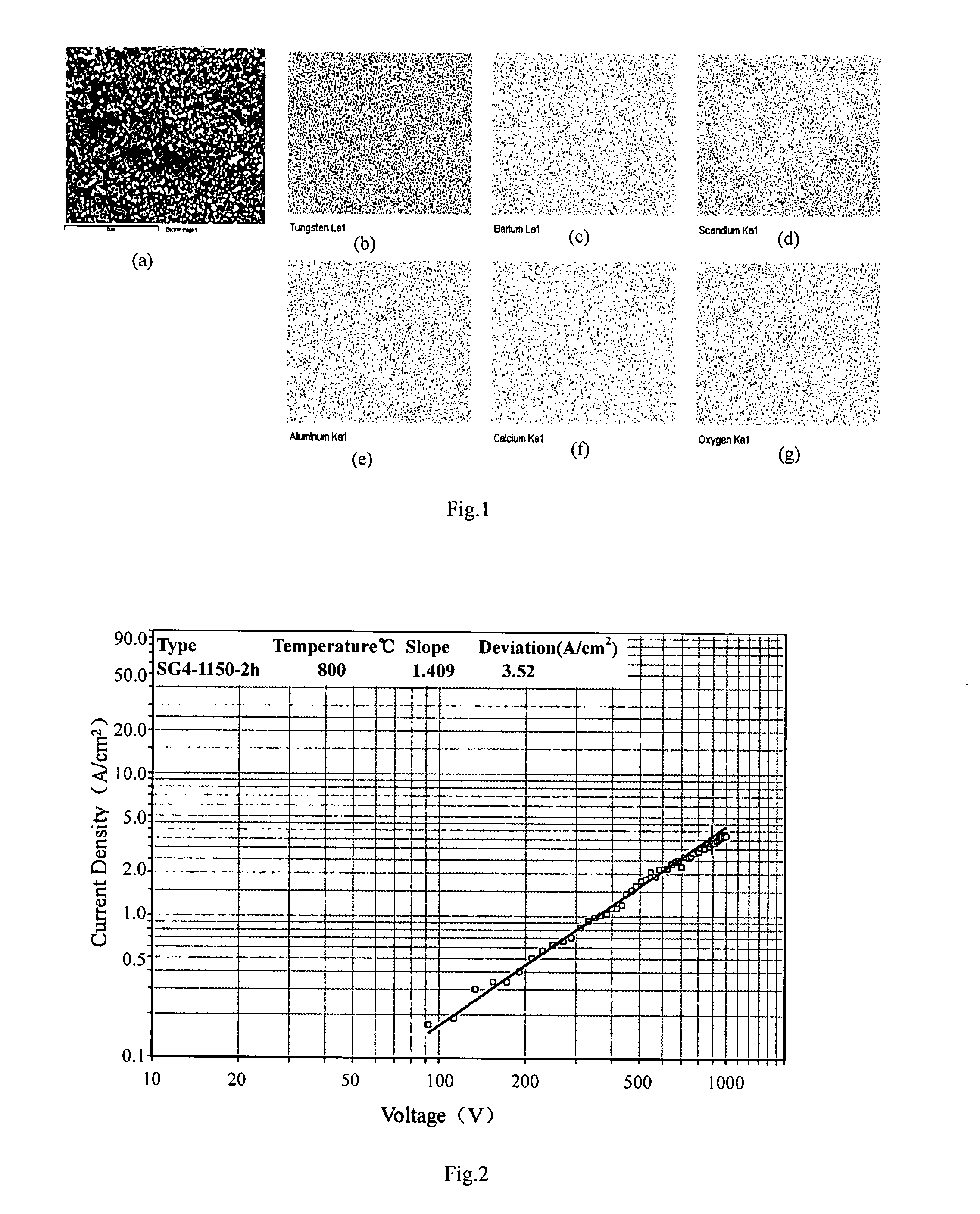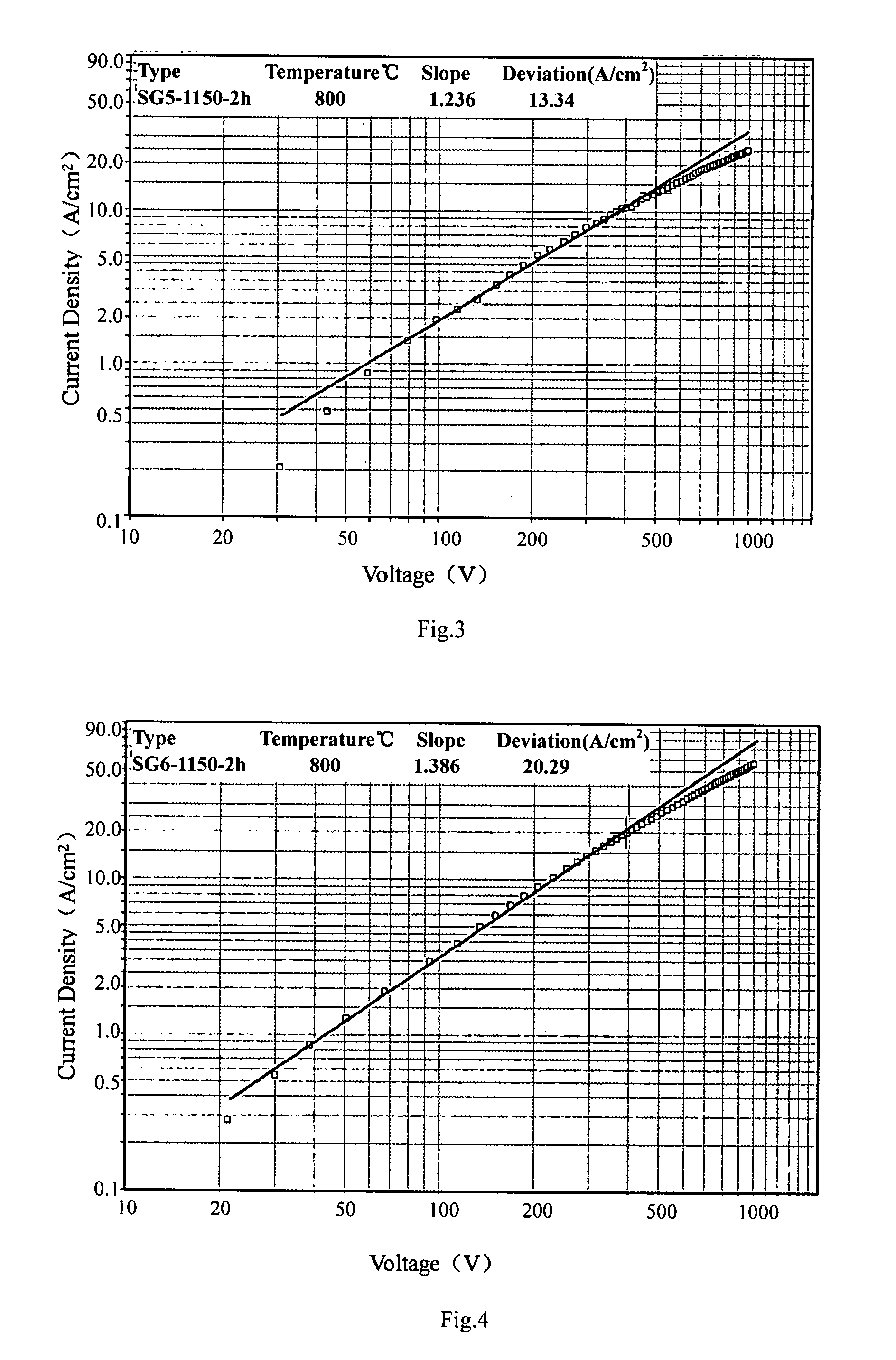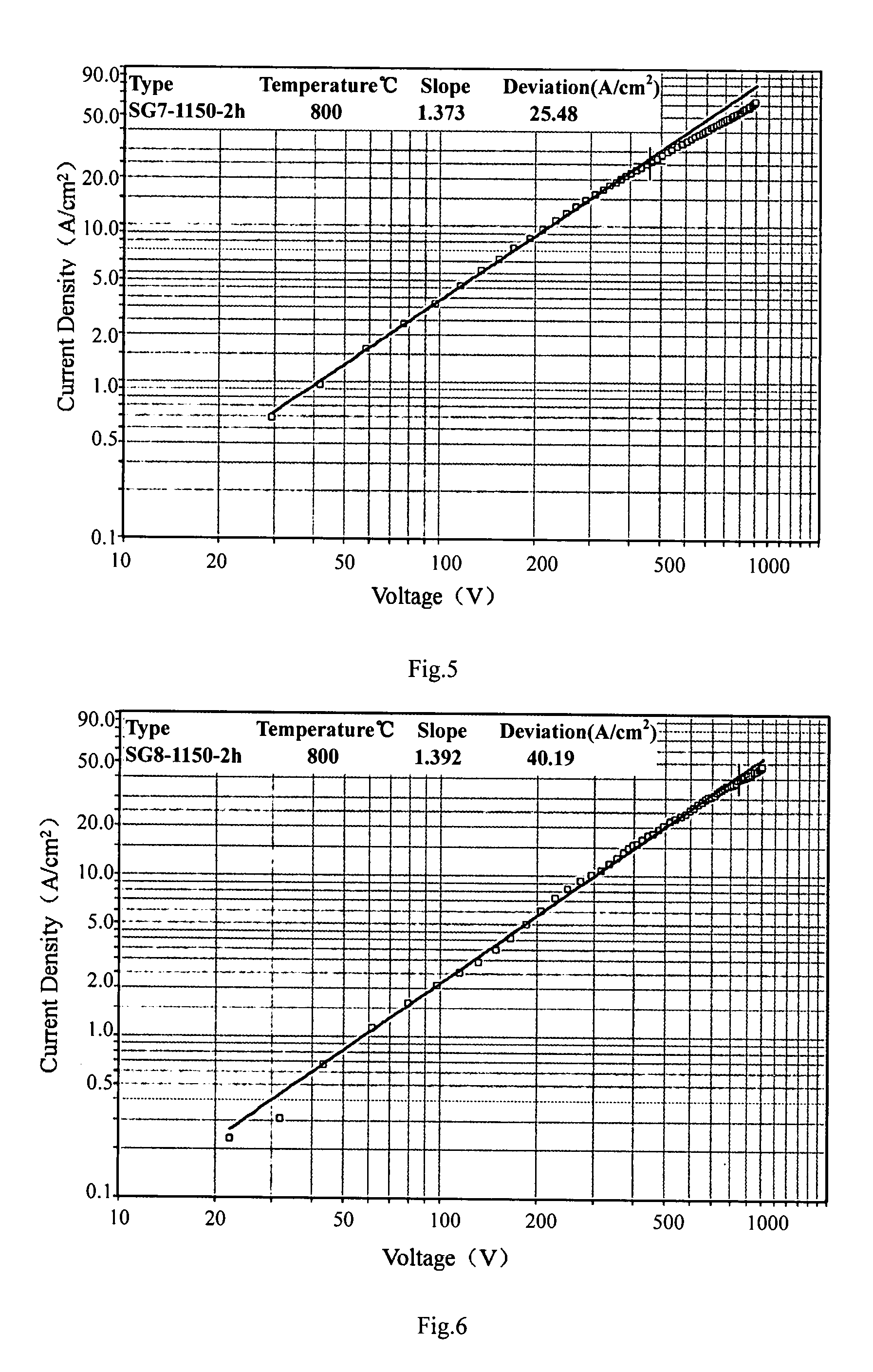Method of manufacturing a pressed scandate dispenser cathode
a technology of pressed scandate and cathode, which is applied in the field of rare, can solve the problems of scandate cathode having lower emission properties and insufficient emission current density of dispensing cathode, and achieve excellent electron emission properties, low energy cost, and good emission properties.
- Summary
- Abstract
- Description
- Claims
- Application Information
AI Technical Summary
Benefits of technology
Problems solved by technology
Method used
Image
Examples
example 1
[0030] The aqueous solution of 2.1976 g of Sc(NO3)3.4H2O, 0.4864 g of Al(NO3)3.9H2O, 12.4422 g of (NH4)6H6W12O40.5H2O 10 g of H3Cit, 0.6775 g of Ba(NO3)2, 0.1531 g of Ca(NO3)2.4H2O was dissolved in the de-ionized water, respectively. The aqueous solution of nitric salt prepared in the first step was mixed together, and then AMT-1 aqueous solution was added into the mixed aqueous solution, and finally, the citric acid aqueous solution was added into the mixed aqueous solution. The water bathing of the mixed aqueous solution was performed at 80° C. till the solution turned into gel, and then gel was calcined at 500° C. for 5 hours to get the composite oxides containing the elements of barium, aluminum, scandium, tungsten, calcium. The oxide powder was reduced by two steps, 500° C. for 2 hours and then 900° C. for 2 hours in hydrogen atmosphere to obtain the composite oxide doped tungsten powders. The powder was pressed into the pellets with the size of Φ3×1.2 mm under the pressure of ...
example 2
[0031] The aqueous solution of 2.1976 g of Sc(NO3)3.4H2O, 0.9728 g of Al(NO3)3.9H2O, 11.7510 g of (NH4)6H6W12O40.5H2O, 10 g of H3Cit, 1.3550 g of Ba(NO3)2, 0.3062 g of Ca(NO3)2.4H2O was dissolved in the de-ionized water, respectively. The aqueous solution of nitric salt prepared in the first step was mixed together, and then the AMT aqueous solution was added into the mixed aqueous solution, and finally, the citric acid aqueous solution was added into the mixed aqueous solution. The water bathing of the mixed aqueous solution was performed at 100° C. till the solution turned into gel, and then gel was calcined at 550° C. for 2 hours to get the composite oxides containing the elements of barium, aluminum, scandium, tungsten, calcium. The oxide powder was reduced by two steps, 500° C. for 2 hours and then 1000° C. for 2 hours in hydrogen atmosphere to obtain the composite oxide doped tungsten powders. The powder was pressed into the pellets with the size of Φ5×1.2 mm under the pressur...
example 3
[0032] The aqueous solution of 2.1976 g of Sc(NO3)3.4H2O, 0.9728 g of Al(NO3)3.9H2O, 11.7510 g of (NH4)6H6W12O40.5H2O, 10 g of H3Cit, 1.3550 g of Ba(NO3)2, 0.3062 g of Ca(NO3)2.4H2O was dissolved in the de-ionized water, respectively. The aqueous solution of nitric salt prepared in the first step was mixed together, and then the AMT aqueous solution was added into the mixed aqueous solution, and finally, the citric acid aqueous solution was added into the mixed aqueous solution. The water bathing of the mixed aqueous solution was performed at 90° C. till the solution turned into sol, and then increasing the water temperature to 100° C. and keeping at this temperature till the sol turned into gel. The gel was calcined at 550° C. for 5 hours to get the composite oxides containing the elements of barium, aluminum, scandium, tungsten, calcium. The oxide powder was reduced by two steps, 500° C. for 2 hours and then 850° C. for 2 hours in hydrogen atmosphere to obtain the composite oxide ...
PUM
| Property | Measurement | Unit |
|---|---|---|
| Temperature | aaaaa | aaaaa |
| Temperature | aaaaa | aaaaa |
| Temperature | aaaaa | aaaaa |
Abstract
Description
Claims
Application Information
 Login to View More
Login to View More - R&D
- Intellectual Property
- Life Sciences
- Materials
- Tech Scout
- Unparalleled Data Quality
- Higher Quality Content
- 60% Fewer Hallucinations
Browse by: Latest US Patents, China's latest patents, Technical Efficacy Thesaurus, Application Domain, Technology Topic, Popular Technical Reports.
© 2025 PatSnap. All rights reserved.Legal|Privacy policy|Modern Slavery Act Transparency Statement|Sitemap|About US| Contact US: help@patsnap.com



